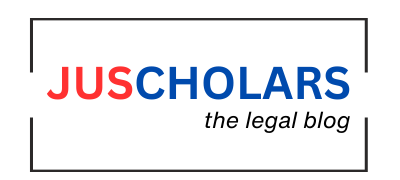Introduction
As the market for drugs has expanded in Indian Medical Sector there has been a growing risk of substandard or spurious drugs flowing through the market.[1] Especially after the Russian – Ukraine Conflict the Medical Sector has taken a hit as both Russia and Ukraine are countries which have a major importers of Indian Drugs and the chances of substandard and spurious drugs being in circulation has increased.[2][3]
According to the 2018 Report on the Nationwide Survey for Spurious Drugs by the Central Drugs Standard Control Organisation under the Ministry of Health and Family Welfare in India, approximately 0.3% of the samples collected from 56 well-known brands were found to be spurious goods, and approximately 0.1% of the 2976 drug samples collected were found to be substandard.[4]
Now some might wonder what are substandard drugs and spurious/falsified drugs. Substandard, also known as “out of specification,” medical products, according to the World Health Organisation, are approved items that do not fulfil their quality standards or specifications, or both, and medical products that are falsified—that is, they purposefully or fraudulently misrepresent their identity, composition, or source.[5]
All countries have a organisation or association to detect and control the flow of spurious and substandard drugs in the market. In India the Central Drugs Standard Control Organization(CDSCO) under Ministry of Health and Family Welfare is the main body responsible for the management of drugs and cosmetics with the help of regulatory bodies such as The Central Drugs Laboratory, The Drugs Consultative Committee and The Drugs Technical Advisory Board.
In this article we will get to know how do the drug regulatory bodies determine the flow of spurious and substandard in India and what are the legal consequences the offenders face for the manufacture or distribution of spurious and substandard drugs.
The Drugs And Cosmetics Act, 1940
The Drugs and Cosmetics act,1940 was enacted on 10 April 1940 by Parliament of India to manage the manufacturing, distribution and import of drugs in India. [6]The main reason for the validation of the act was to ensure the safety and efficiency of drugs that are circulating in
India as well as their compliance with the quality standards of the state. [7]
According to the act, the term “drug” is anything that is substances, diagnostics, and medical devices as well as medical services.[8] “Cosmetic” is defined by the act as any product aimed at beautifying or cleansing the human body, but it excludes soaps. [9]Ayurveda and Unani drugs were added to this definition in 1964 when the act was amended to include them. According to § 9B and § 17B of The Drugs and Cosmetics act,1940 Spurious Drugs are defined as: (a) Imported under a name that belongs to another drug,
- Imitate, substitute, or resemble another drug in a deceptive manner,
- Bear a fictitious or non-existent manufacturer’s name on the label or container,
- Have been wholly or partly substituted by another drug or substance,
- Claim to be a product of a manufacturer to whom it does not truly belong.[10][11]
According to Section 8 of the Drugs and Cosmetics Act, 1940, a drug shall be deemed to be substandard if it does not meet the quality and purity standards prescribed by the Act or if it falls below the declared potency or strength specified on its label or container. Substandard drugs are those that do not conform to the established quality parameters and may pose risks to public health due to their compromised effectiveness or safety.[12]
The Drugs and Cosmetics act,1940 also tells us that according to section 18 any drug and cosmetics which is deemed as substandard, spurious, adulterated or/and misbranded is unethical and illegal except it is found in small quantities with a registered medical practitioner.[13]
In the case of Drug Inspector and Ors. V. Fizikem Laboratories14, the Supreme Court ruled that the appointed inspector under the act possesses the authority to conduct inspections of any premises where drugs or cosmetics are being manufactured.
Additionally, the inspector is empowered to not only conduct searches but also to test the drugs and cosmetics being produced in those premises. Additionally the Supreme Court in Union of India v. Ashok Kumar Sharma[14] has stated that while the responsibility to register the First Information Report (FIR) lies with the Police Officer, the authority to take action in such situations rests with the Drug Inspector.
The Drug Inspector possesses powers that empower them to conduct searches of premises related to drug-related offenses and to take necessary measures as outlined in the applicable law to address and prevent such offenses. The Court highlighted that the key objective is to ensure a cohesive interpretation of the law, particularly concerning the Drugs and Cosmetics Act and the Indian Penal Code.
When Are Drugs Declared Defective
Examining the drug samples collected all over India to see if they are substandard or spurious is the job of Central Drugs Standard Control Organization(CDSCO) specifically the Central Drugs Laboratory.
The Central Drugs Laboratory are established according to section 6 of The Drugs and
Cosmetics Act, 1940.[15]
The Central Drugs Laboratory classifies defective drugs in broad categories are tells us hoe to know if the drugs are defective:
- Category A (Spurious and Adulterated Drugs):
Imitation or spurious drug products are compositions designed to fool consumers by hiding their true identity and making them resemble other, more widely used pharmaceuticals, frequently with well-known brands. The goal is to profit from the initial product’s popularity. The active chemicals that these fake medications purport to have may or may not be present. Although licenced producers can occasionally be engaged, such spurious medications are typically made by antisocial, unlicensed individuals.
Conversely, adulterated pharmaceuticals are ones that have been discovered to include adulterants or substitute materials, or they might be tainted with dirt, which renders them hazardous to human health. Both domestic and foreign purchasers’ trust is eroded by the availability of spurious pharmaceuticals in the nation. This is not just a practical problem, but also an emotional one, requiring a strong and coordinated response from various agencies to address it effectively.
- Category B (Grossly sub-standard drugs):
Drugs manufactured by licensed companies can sometimes have serious defects that significantly impact the drug’s quality. These defects might occur due to gross negligence or failure to comply with Good Manufacturing Practices (GMPs) during the manufacturing process. Some of the common defects are:
- Thermo labile products may have active ingredient contents below 70% or thermo stable products may have active ingredient contents below 5% of the permitted limits.
- Tablets or capsules may fail in disintegration tests if required.Tablets or capsules may also fail in dissolution tests, and their active contents might be found to be less than 70% for thermo labile products or below 5% of the prescribed limits for thermo stable products.Liquid preparations may exhibit the presence of fungus.Parental preparations might fail in sterility, pyrogen/endotoxin tests, or show undue toxicity.Vaccines could fail in potency, sterility, toxicity, or moisture content.
- Any presence of an adulterant that makes the product harmful to health is also a potential concern.
- Category C (Minor defects):
Drugs produced by licenced manufacturers were discovered to have flaws resulting from small variances in quality, making them subpar. Inadequate pre-formulation development studies, a manufacturer’s lack of process controls, or improper storage or transportation conditions for medications can all lead to these kinds of problems. Here are some examples of these defects:
(i)Broken or chipped tablets.
- Presence of spot/discolouration/uneven coating.
- Cracking of emulsions.
- Clear liquid preparations showing sedimentation.
- Change in colour of the formulation.
- Slight variation in net content.
- Formulations failing in weight variation.
- Formulations failing to respond to the colour test.
- Isolated cases of presences of foreign matter.
- Labelling error including nomenclature mistake, Rx, NRx, XRx, Red Line, Schedule H.
Caution, Colour etc.[16]
Central Drugs Standard Control Organization(CDSCO)
Central Drugs Standard Control Organization(CDSCO) is assigned to the Central
Government under § 5 of The Drugs and Cosmetics Act,1940 as the Central Drug Authority for for discharging function assigned to the Central Government. [17]The Central Drugs Standard Control Organization (CDSCO) has the control over drug imports, approval of new drugs and clinical trials, Drugs Technical Advisory Board (DTAB) and Pharmaceuticals Consultative Committee (DCC) meetings, and Central Licence Approving Authority approval of certain licences.[18]
In India, the regulation and management of medications and pharmaceuticals are greatly influenced by the Central medications Standard management Organisation (CDSCO). The following are the main duties and tasks of the CDSCO:
- Approval of new drugs and clinical trials
One of the main functions of CDSCO is assess and give approval for the manufacturing of new drugs and cosmetics in Indian Medical Market.
- Import Registration and Licensing
CDSCO is responsible for the registration and licensing of imported drugs, making sure that these products meet the necessary standards and do not pose any risks to public health.
- Licence approval for some medical devices, LVPs, vaccines, blood banks, and r-DNA products (CLAA Scheme)
Under the Central Licence Approving Authority (CLAA) programme, the CDSCO also issues licences to producers of vaccines, large volume parenterals (LVPs), some medical equipment, and blood banks.
- Amendment to D &C Act and Rules
CDSCO can suggest and enforce amendments to the Drugs and Cosmetics Act and Rules, ensuring adaptability to industry advancements.
- Banning of drugs and cosmetics
In cases where certain drugs or cosmetics are found to be unsafe or ineffective, CDSCO has the power to ban their manufacturing, distribution, and sale to protect public health.
- Issue of NOCs for Export, Test Licences, and Personal Licences
CDSCO issues test licenses for the conduct of clinical trials, personal licenses for drug manufacturing personnel, and No Objection Certificates (NOCs) for the export of drugs and medical devices, ensuring compliance with regulatory requirements.
- Testing of New Drugs.
The organization conducts its own testing and evaluation of new drugs to confirm their quality and compliance with established standards before granting marketing approval.
- Control and market surveillance via the Center’s Inspectorate In addition to the State Authority
The Inspectorate of CDSCO supervises and guarantees effective operations of state drug regulatory bodies, adding scrutiny and accountability for consistent and high standards among states.[19]
Penalties And Legal Actions Against Offenders
The Drugs and Cosmetics Act, 1940, imposes strict penalties on those involved in the sale or manufacture of spurious, adulterated, or substandard drugs and cosmetics to protect public health and safety.
For spurious or adulterated drugs that can cause death or grievous harm to the consumer, the person convicted may be sentenced to a minimum of ten years in jail, with the possibility of a life sentence, and a fine of no less than ten lakh rupees or three times the amount of drugs seized, whichever is higher. If using these medications causes someone to pass away, the guilty party is required to compensate the surviving family member with the fine.[20]
For other types of spurious or adulterated drugs or drugs sold without a valid license, A fine of at least one lakh rupees or three times the value of the drugs that were seized, whichever is greater, may be imposed in addition to a minimum sentence of three years in jail, with a maximum term of five years. The judge may reduce punishments for particular causes.[21]
Apart from spurious and adulterated drugs, the Drugs and Cosmetics Act, 1940, also addresses offenses related to the manufacture and distribution of substandard drugs and cosmetics. Substandard drugs are products that do not meet the quality and purity standards prescribed by the Act or fall below the declared potency or strength specified on their label or container.[22]
For offenses related to the manufacture, sale, or distribution of substandard drugs, The defendant may be sentenced to a minimum of one year in prison, with the possibility of a two-year sentence, and a fine that the court will determine, but which cannot be less than twenty thousand rupees.[23]
To enforce the law, the Act empowers inspectors to inspect premises, seize drugs or cosmetics, search persons, places, vehicles, vessels, and other conveyances, and examine records and documents. Obstructing an inspector may result in imprisonment for up to three years, a fine, or both.[24]
Conclusion
The growing market for drugs in the Indian medical sector has brought about an increased risk of substandard or spurious drugs circulating in the market. With Russia and Ukraine being major importers of Indian drugs, recent conflicts have further amplified concerns about the presence of substandard and falsified drugs. However, the Central Drugs Standard Control Organization (CDSCO) under the Ministry of Health and Family Welfare plays a vital role in monitoring and controlling the flow of such drugs.
The Drugs and Cosmetics Act, 1940, is a comprehensive legislation that intends to control the manufacturing, distribution, and import of drugs and cosmetics in India. It defines various categories of defective drugs, such as spurious and adulterated drugs, grossly sub-standard drugs, and those with minor defects. The Act empowers inspectors to conduct inspections, seize drugs, and take necessary actions to address drug-related offenses.
The CDSCO, as the central drug authority, holds significant responsibilities, including approving new drugs and clinical trials, licensing imports, and overseeing blood banks and medical equipment manufacturers. Moreover, it has the power to ban drugs and cosmetics found unsafe or ineffective and can suggest amendments to the Drugs and Cosmetics Act and Rules to keep up with industry advancements.
To safeguard public health, the Act imposes strict penalties on offenders involved in the sale or manufacture of spurious, adulterated, or substandard drugs and cosmetics. Those convicted may face imprisonment and hefty fines, and in cases of drugs causing death or harm, the offenders are held liable to compensate the affected individuals or their relatives.
Through the central drug inspectorate and state authorities, the CDSCO ensures uniformity and high standards across different states in regulating drugs and cosmetics. By conducting market surveillance and oversight, the organization remains vigilant in detecting and preventing the circulation of substandard or spurious drugs in the Indian market.
Overall, the Drugs and Cosmetics Act, 1940, combined with the diligent efforts of the CDSCO and its regulatory bodies, plays a crucial role in upholding the safety and effectivity of drugs and cosmetics in India. By enforcing strict penalties, the Act sends a strong message that the well-being of consumers is of utmost importance, and offenders will face legal consequences for compromising public health.
[1] Lucy Rana, India: The Counterfeit Conundrum: Civil And Criminal Remedies For Spurious Medicines In India, Mondaq, (25, July 2023, 9:18), https://www.mondaq.com/india/trademark/1125710/the-counterfeitconundrum-civil-and-criminal-remedies-for-spurious-medicines-in-india .
[2] Anand and Anand, Russia-Ukraine crisis influences Indian pharma industry, (25, July 2023, 19:42), https://www.lexology.com/library/detail.aspx?g=8fee7a6b-6bc3-4433-bc76-
[3] cf52e9dc5#:~:text=Indian%20generic%20companies%20like%20Ranbaxy,dent%20in%20their%20pharmac eutical%20exports .
[4] Central Drugs Standard Control Organisation, Report on countrywide survey for Spurious Drugs, 60, 2018 4 World Health Organisation, https://www.who.int/news-room/fact-sheets/detail/substandard-and-falsifiedmedical-products (last visited July 28, 2023).
[5] World Health Organisation, https://www.who.int/news-room/fact-sheets/detail/substandard-and-falsifiedmedical-products (last visited July 28, 2023).
[6] Dr. Lily Srivastava (2010), Law & Medicine 216, (Universal Law Publishing 2010).
[7] Dr. B. S. Kuchekar, Pharmaceutical Jurisprudence 5.1-5.2, (Pragati Books Pvt. 2008).
[8] The Drugs and Cosmetics Act, 1940, § 3, No. 23, Acts of Parliament, 1940 (India).
[9] Id.
[10] The Drugs and Cosmetics Act, 1940, § 9B, No. 23, Acts of Parliament, 1940 (India).
[11] The Drugs and Cosmetics Act, 1940, § 17B, No. 23, Acts of Parliament, 1940 (India).
[12] The Drugs and Cosmetics Act, 1940, § 8, No. 23, Acts of Parliament, 1940 (India).
[13] The Drugs and Cosmetics Act, 1940, § 18, No. 23, Acts of Parliament, 1940 (India). 14 Drug Inspector and Ors. V. Fizikem Laboratories, ACR 2212 (SC)
[14] Union of India (UOI) vs. Ashok Kumar Sharma and Ors., MANU/SC/0648/2020
[15] The Drugs and Cosmetics Act, 1940, § 6, No. 23, Acts of Parliament, 1940 (India
[16] Central Drugs Standard Control Organisation, https://cdsco.gov.in/opencms/export/sites/CDSCO_WEB/Pdfdocuments/Consumer_Section_PDFs/DCC_Guidelines_Spurious_Drugs.pdf (last visited Aug. 2, 2023).
[17] The Drugs and Cosmetics Act, 1940, § 5, No. 23, Acts of Parliament, 1940 (India).
[18] Central Drugs Standard Control Organisation, https://cdsco.gov.in/opencms/opencms/en/Aboutus/Introduction/ (last visited July 29, 2023).
[19] Central Drugs Standard Control Organisation, https://cdsco.gov.in/opencms/opencms/en/About-us/Functions/ (last visited July 30, 2023).
[20] The Drugs and Cosmetics Act, 1940, § 27, No. 23, Acts of Parliament, 1940 (India).
[21] Id.
[22] The Drugs and Cosmetics Act, 1940, § 27(b), No. 23, Acts of Parliament, 1940 (India).
[23] Id.
[24] The Drugs and Cosmetics Act, 1940, § 22(b), No. 23, Acts of Parliament, 1940 (India).
Author: Siddhesh Munghate is a 6th Semester BBA LLB Student at Alliance University






